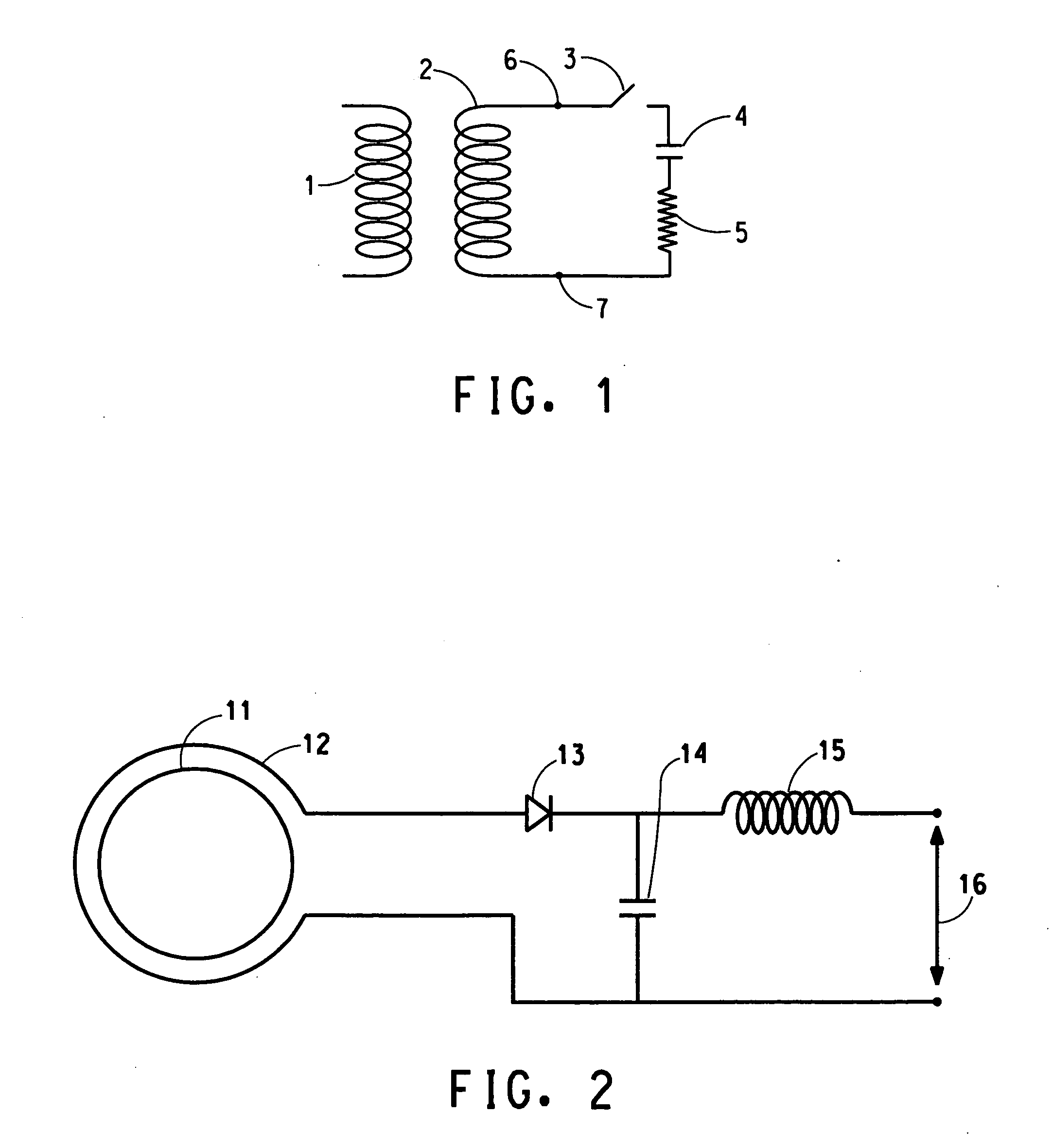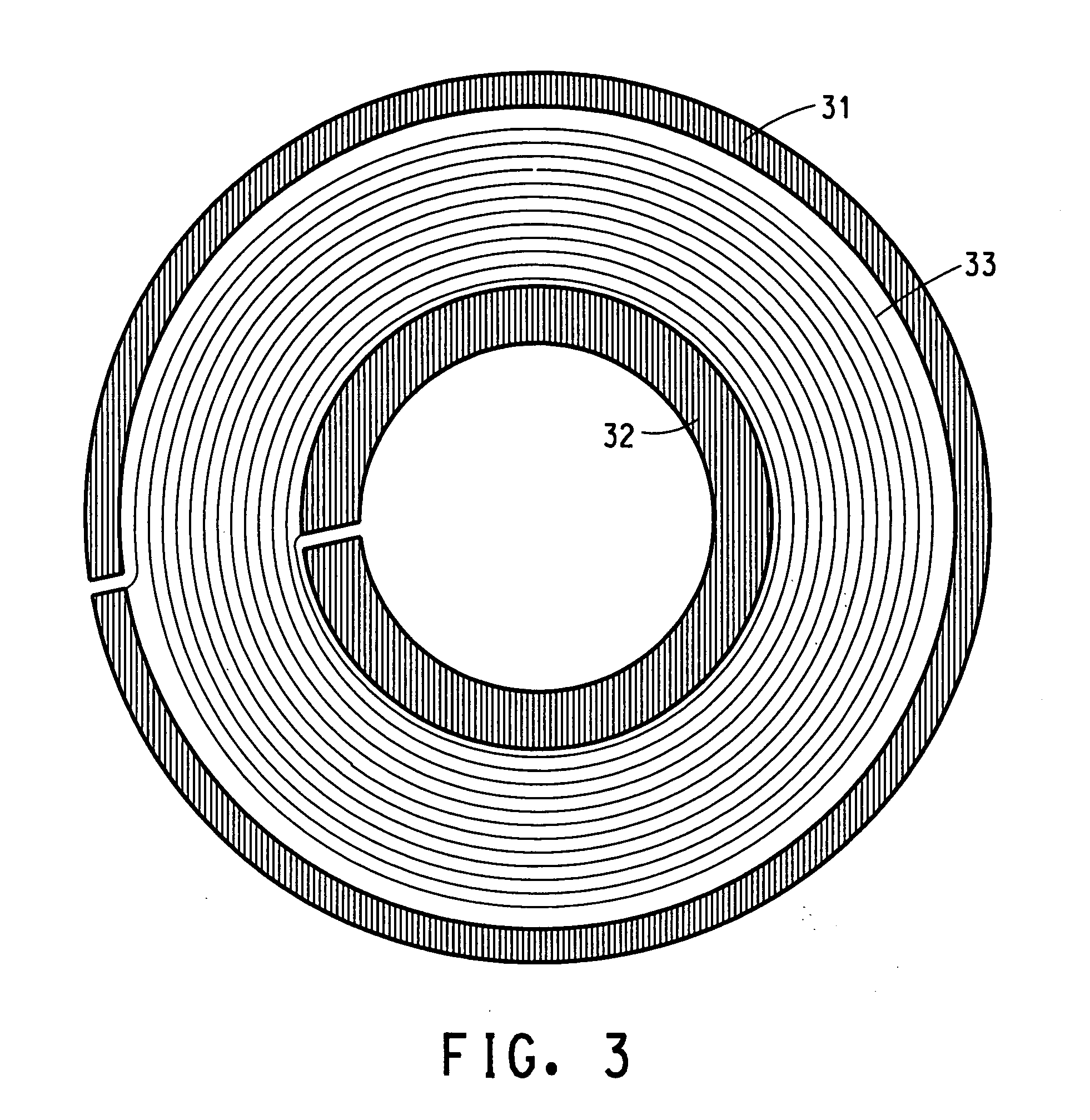Q-damping of a high temperature superconductor self-resonant coil in a nuclear quadropole detection system
- Summary
- Abstract
- Description
- Claims
- Application Information
AI Technical Summary
Benefits of technology
Problems solved by technology
Method used
Image
Examples
example 1
[0030] The purpose of this example is to demonstrate the rapid recovery time achieved with the Q-damping circuit and the diode operated at a forward bias such that the diode is resistive. The Q-damping circuit used is shown in FIG. 2. The HTS self-resonant transmit and receive coil used is comprised of two coupled essentially identical Tl2Ba2CaCu2O8 planar coils. Each of the coupled coils is on a sapphire (Al2O3) substrate with the coil design configuration shown in FIG. 3 on both sides of the substrate.
[0031] A clean, polished single crystal sapphire substrate with a diameter of 2 inches (5.1 cm) and an approximate thickness of 0.018 inches (0.46 mm) was obtained from Union Carbide Corp. An epitaxial CeO2 buffer layer is grown on both sides of the substrate by off-axis sputter deposition with the substrate temperature held in the range of about 700-800° C. Off-axis magnetron sputtering of a Ba:Ca:Cu oxide target is used to deposit, at room temperature (about 20° C.), an amorphous ...
example 2
[0041] The purpose of this example is to demonstrate the detection of NQR signals from sodium nitrate using the Q-damping circuit of the instant invention. The same HTS self-resonant transmit and receive coil, comprised of the same two coupled essentially identical Tl2Ba2CaCu2O8 planar coils and the copper single loop coupling the HTS self-resonant transmit and receive coil to the Q-damping circuit, used in Example 1 is used in Example 2. The Q-damping circuit is identical to that used in Example 1 except that the inductor 15 had inductance of 3300 μH. In addition, a 0.1 μH ceramic capacitor is added to the circuit between the bias voltage VC electrode attached to the inductor 15 and ground for additional noise suppression.
[0042] The sodium nitrate sample is placed approximately 1 cm from the HTS self-resonant transmit and receive coil. A bias voltage VC is set at +8 V, a reverse bias for the diode, to inactivate the Q-damping circuit, and a bias voltage is set at −0.6 V, a forward...
PUM
 Login to View More
Login to View More Abstract
Description
Claims
Application Information
 Login to View More
Login to View More - R&D
- Intellectual Property
- Life Sciences
- Materials
- Tech Scout
- Unparalleled Data Quality
- Higher Quality Content
- 60% Fewer Hallucinations
Browse by: Latest US Patents, China's latest patents, Technical Efficacy Thesaurus, Application Domain, Technology Topic, Popular Technical Reports.
© 2025 PatSnap. All rights reserved.Legal|Privacy policy|Modern Slavery Act Transparency Statement|Sitemap|About US| Contact US: help@patsnap.com



